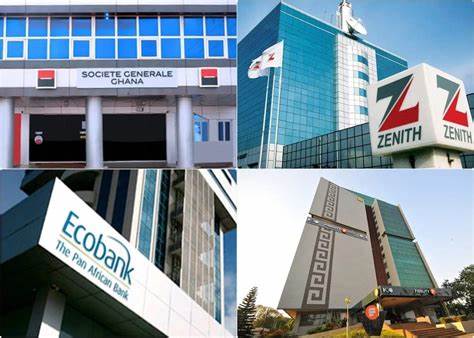Cal Bank offered the cheapest lending rate of 15.97% in the banking industry, according to the Average Lending Rates of universal banks, published by the Bank of Ghana as of the end of July this year.
The listed bank per the figures from the Bank of Ghana offers lending rate lower than the regulator’s Reference Rate.
However, credit worthy clients will enjoy cost of credit lower than the 15.97%, but those considered as high risk will pay more interest for the loans acquired from the bank.
In 2nd place is Guaranty Trust Bank with an average cost of credit of 16.97%. Closely following GT Bank in third position is Bank of Africa with lending rate of 17.19%.
OmniBSIC and Ecobank Ghana were ranked 4th and 5th respectively with average lending rates of 17.95% and 18.41% respectively.
The Bank of Ghana’s policy rate presently stands at 14.5%. So these banks offered interest rates on loans of between 1.47 and 3.91 percentage points higher than the Central Bank’s base lending rate.
This means the spread between the policy rate and their average lending rates make reasonable sense. 14 out of the 23 banks offered lending rates of more than 20%.
Agricultural Development Bank rate of 24.89% was the highest in the banking industry.
It is followed by Societe Generale and Absa Bank with average lending rates of 23.61% and 23.59% respectively.
In conclusion, the Bank of Ghana said the publication of the rates is to help promote transparency in the pricing of loans by the universal banks.
Cost of loans fall further, as average lending rate pegged at 20.61% – BoG
Cost of loans continued to fall but marginally, as average lending rate stood at 20.61% per annum in June this year.
This was equivalent to 1.72% interest on loans per month.
However, the average lending rate varied among the banks and the respective sectors.
For instance, some banks offered loans as low as 17% per annum, whilst others charge rates as high as 27%. Overall, it depends on the risk profile of the customers.
Also, lending to the agriculture sector is considered riskier than the manufacturing sector, and therefore credit to the agriculture sector will be higher.
Latest Stories
-
We didn’t sneak out 10 BVDs; they were auctioned as obsolete equipment – EC
3 hours -
King Charles to resume public duties after progress in cancer treatment
3 hours -
Arda Guler scores on first start in La Liga as Madrid beat Real Sociedad
4 hours -
Fatawu Issahaku’s Leicester City secures Premier League promotion after Leeds defeat
4 hours -
Anticipation builds as Junior Speller hosts nationwide auditions
4 hours -
Etse Sikanku: The driver’s mate conundrum
5 hours -
IMF Deputy Chief worried large chunk of Eurobonds is used to service debt
5 hours -
Otumfuo Osei Tutu II celebrates 25 years of peaceful rule on golden stool
5 hours -
We have enough funds to pay accruing benefits; we’ve never missed pension payments since 1991 – SSNIT
6 hours -
Let’s embrace shared vision and propel National Banking College – First Deputy Governor
6 hours -
Liverpool agree compensation deal with Feyenoord for Slot
6 hours -
Ejisu by-election: There’s no evidence of NPP engaging in vote-buying – Ahiagbah
6 hours -
Ejisu by-election: Independent ex-NPP MP’s campaign team warns party against dubious tactics
7 hours -
ZEN Petroleum supports Tse-Addo Future Leaders School
8 hours -
NPP must win back Adentan seat in 2024 polls – Obeng Fosu
8 hours

